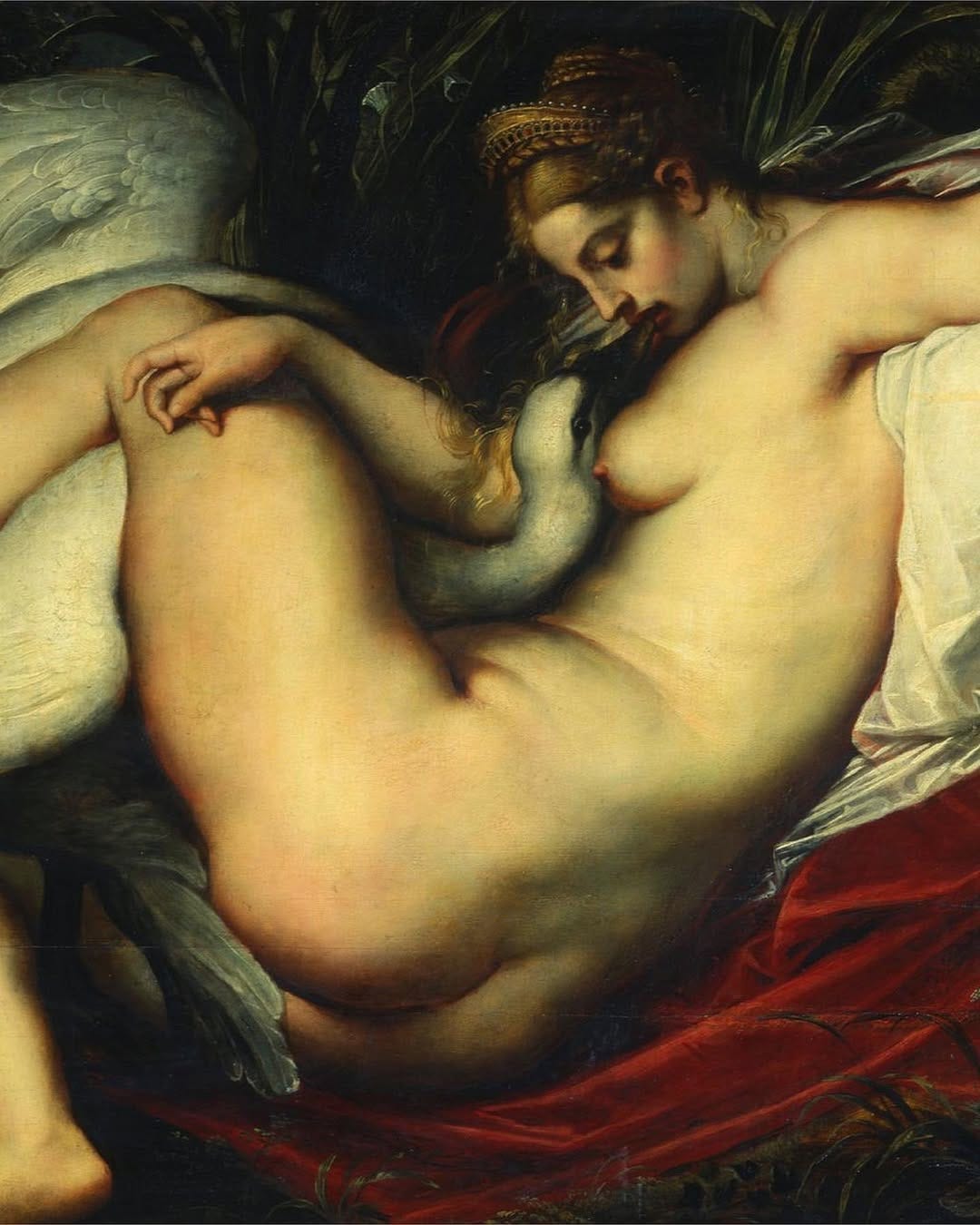PETER PAUL RUBENS ‐ LEDA AND THE SWAN, 1598
The painting shows a scene from Greek mythology where Zeus took the form of a swan. In this avine form, he seduces and rapes Leda, the Queen of Sparta. According to Ovid, Leda was famed for her beautiful black hair and snowy white skin. The result of Leda and Zeus’ romance was two children, Polydeuces and Helen (who later became Helen of Troy)
In the erotic depiction, we see Leda in an intimate intertwining with the swan. Their heads are turned towards each other as she the swan closer. Ruben's technique of depicting the different surfaces is admirable. Leda's smooth, warm skin contrasts with the cool, shiny plumage of the swan. The surroundings, reminiscent of Dutch flower still lifes, indicate that Rubens completed the painting before his trip to Italy in 1600.
The Counter-Reformation was in full swing during Rubens' lifetime, particularly in Catholic regions like the Spanish Netherlands where he lived and worked. This period was marked by a push towards moral purity and the suppression of what was deemed lascivious or immodest. The depiction of Leda, especially if interpreted as a scene of seduction or rape by Zeus in the guise of a swan, could be seen as promoting or at least depicting lustful behavior, which was contrary to the moral teachings of the Church.
Rubens, like many artists of his time, was deeply influenced by Michelangelo, one of the towering figures of the Renaissance. Even though Michelangelo's "Leda and the Swan" was not widely seen due to its loss, the theme and perhaps some copies or drawings might have influenced Rubens. The subject matter itself, a popular choice for artists, would have been a point of departure for Rubens to reinterpret in his Baroque style.




